

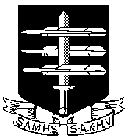 The South African
The South African
Front Cover illustration
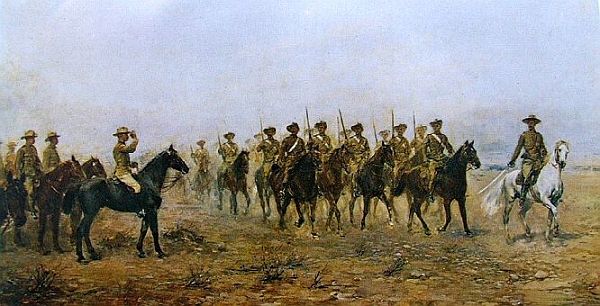
Cover Illustration::
"E" Troop Rhodesian Regiment before Major-General Baden-Powell,
17 May 1900 on the Relief of Mafeking, by G. Lindemere, 1901.
National Archives of Zimbabwe.
Inside front cover illustrations:
Eastern Cape Field Trip: The Eastern Cape Branch (SAMHSEC) undertakes annual field trips.
The field trip in August 2019 spent two nights in Hogsback and visited sites of interest from the 7th and 8th Frontier Wars.
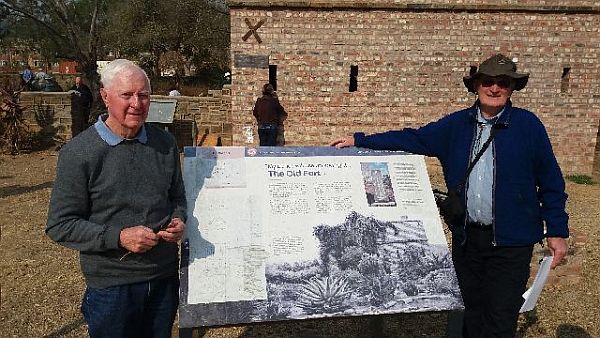
John Martin and Peter Duffel-Canham at the site of
Fort Hare on the campus of the University of Fort Hare.
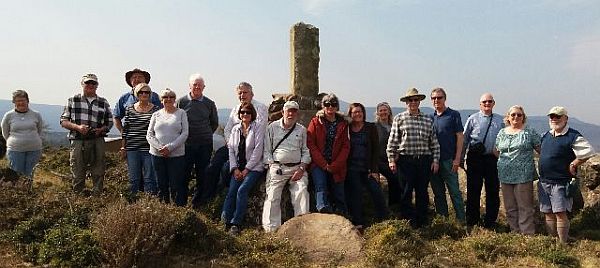
The field trip visited the monument at St Mungo’s Church
to the victims of the Christmas Day 1850 attacks
on the villages of Woburn Aukland and Juanasberg
Photographs by courtesy of Peter Duffel-Canham
Inside back cover:
Bicentenary of Napoleon's Death

Napoleon on his Imperial throne
Painting by Ingres, 1806
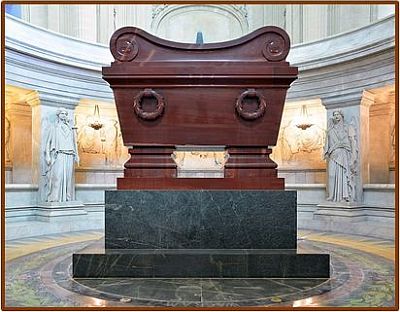
Napoleon's Tomb in Les Invalides, Paris.
Image by Livioandronico2013
Both photographs accessed via Wikipedia.
Back cover:
The Queen's Scarf
Queen Victoria personally crocheted eight scarves during the Second Anglo-Boer War (aka South African War) to be awarded as tokens of her appreciation for her soldiers. These khaki-coloured woollen scarves were five foot (1.6m) long, and were worn as sashes as shown in the bottom photo from a museum in New Zealand
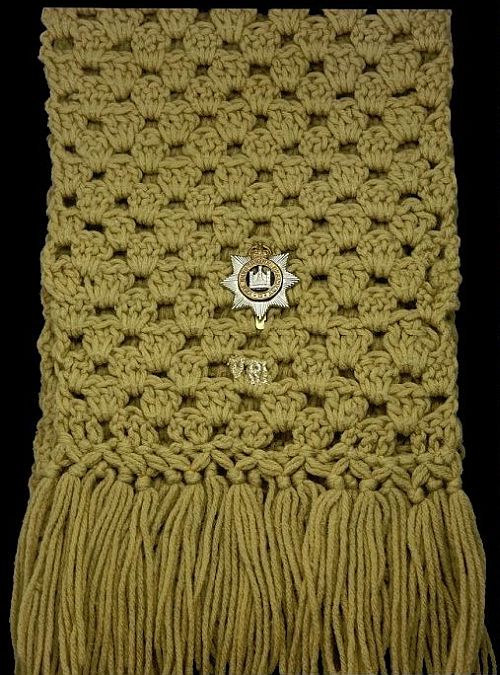
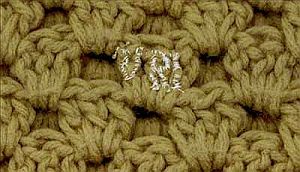
The royal cipher VRI for
'Victoria Regina et Imperatrix'
was sewn onto each scarf
Four were given to British NCOs fighting under Gen Hildyard near Spionkop, one to Colour Sergeant Frank Kingsley, DCM, 2nd Bn The West Yorkshire Regiment as mentioned in the article on Bastion Hill by Dr G Winton. In each Regiment, NCOs and men voted for their bravest representative who then received the scarf.
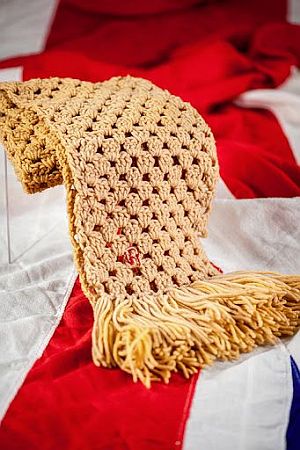
Scarf displayeed on flag
The other four were to Colonial troops - one each was given to
an Australian Trooper, a Canadian Private and a New Zealand trooper
with the last to a South African Trooper in Robert's Horse.
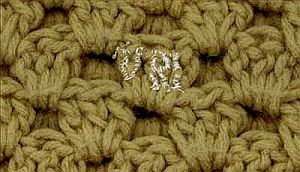

All photographs accessed via the Internet.
On 9 June 2025 the Chairman of the Eastern Cape Branch (SAMHSEC) gave a Zoom talk about the Queen's scarves. His list of recipients is repeated below:
Four Regular Force recipients:
Colour Sgt Clay, East Surrey Regt, is mentioned in the Regimental History as having been wounded at Colenso and again at Vaalkrantz. His scarf is in a museum in Dover
Colour Sgt Colclough, Devonshire Regt, was selected as a scarf recipient by his battalion commander from 8 candidates nominated by fellow soldiers. After the war, he emigrated to Canada & served in the Canadian Army, retiring as a lieutenant colonel. His scarf is in the Manitoba Museum
Colour Sgt Ferret, West Surrey Regt, is mentioned in the Regimental History as having been awarded a scarf for gallantry at Colenso. It is in the Regimental Museum in Guilford
Colour Sgt Kingsley, West Yorkshire Regt. On 21 January 1900, during the Spion Kop operations,G Company of the West Yorkshire Regiment was pinned down by enemy fire on Thabanyama. Colour Sergeant Kingsley brought the mortally wounded Company Commander under cover. Later, when the only other officer present was wounded, Kingsley took command and successfully withdrew the company to safety. Kingsley was recommended for the award of the Distinguished Conduct Medal, which was not approved. The whereabouts of the scarf awarded to Colour Sergeant Kingsley is not known.
Four Colonial Force recipients:
Trooper Chadwick, Cape Colonial Forces, was an American serving in Robert’s Horse. His scarf was awarded for gallant conduct at Sanna’s Post. He had previously been awarded a gallantry medal in the Spanish American War. After the war, he returned to the United States. The whereabouts of his scarf in unknown.
Private Coutts, New Zealand Contingent, His scarf was also awarded for gallant conduct at Sanna’s Post. He returned to New Zealand to great public acclaim. He served second tour of duty in South Africa. His scarf is in the New Zealand War Museum.
Private Thompson, Royal Canadian Regt,of the 43rd Ottawa and Carleton Rifles, attached to 2nd Special Service Battalion, The Royal Canadian Regiment.
On Bloody Sunday: 18 February 1900 after a failed daylight charge on the Boer laager at Paardeberg, the RCR withdrew, leaving several wounded men in front of the Boer positions. Thompson ran to assist one of them. Exposed to enemy fire, Thompson lay beside the man, stopping bleeding for seven hours until reached by stretcher bearers under cover of darkness, thus saving the man’s life.
On Majuba Day: 28 February 1900 At first light after a failed night attack, the RCR spotted a wounded man in front of their position. Thompson ran 300 metres under fire to his assistance, arriving just before the wounded man was killed by another bullet.
The Boers surrendered an hour later. The recommendation for the award of the Victoria Cross to Thompson was not approved. Thompson died in April 1908 aged 31 and is buried in Chelsea, Quebec. The Royal Canadian Regiment lays a wreath on his grave on 11 November each year.
Thompson’s scarf is on permanent loan to the National War Museum in Ottawa.
Private Du Frayer, NSW Mounted Rifles. In April 1900, a Recce Patrol of 12 men was ambushed near Karee. Private Clark’s horse was shot and, in falling, stunned his rider. Du Frayer turned back under heavy fire, dismounted, shook Clark into a semi-conscious state and mounting again, got Clark up behind him
and out of danger.
Du Frayer received great public acclaim on his return to Australia, with one press report declaring the award of the Queen’s Scarf to be “equivalent to the award of the VC and Bar”
Du Frayer adopted for himself the post nominal letters QS. He later returned to South Africa and served in German South-West Africa and German East Africa, where he was Mentioned in Dispatches and awarded the OBE
He died in 1940 in Tanganyika (Tanzania). His epitaph reads
“Major A.H. Du Frayer, QS, OBE”. His scarf is in the Australian War Museum
The Queen's Scarves were unofficial awards which remain one of the rarest recognitions for gallantry in the field.
Return to Journal Index OR Society's Home page
South African Military History Society / scribe@samilitaryhistory.org